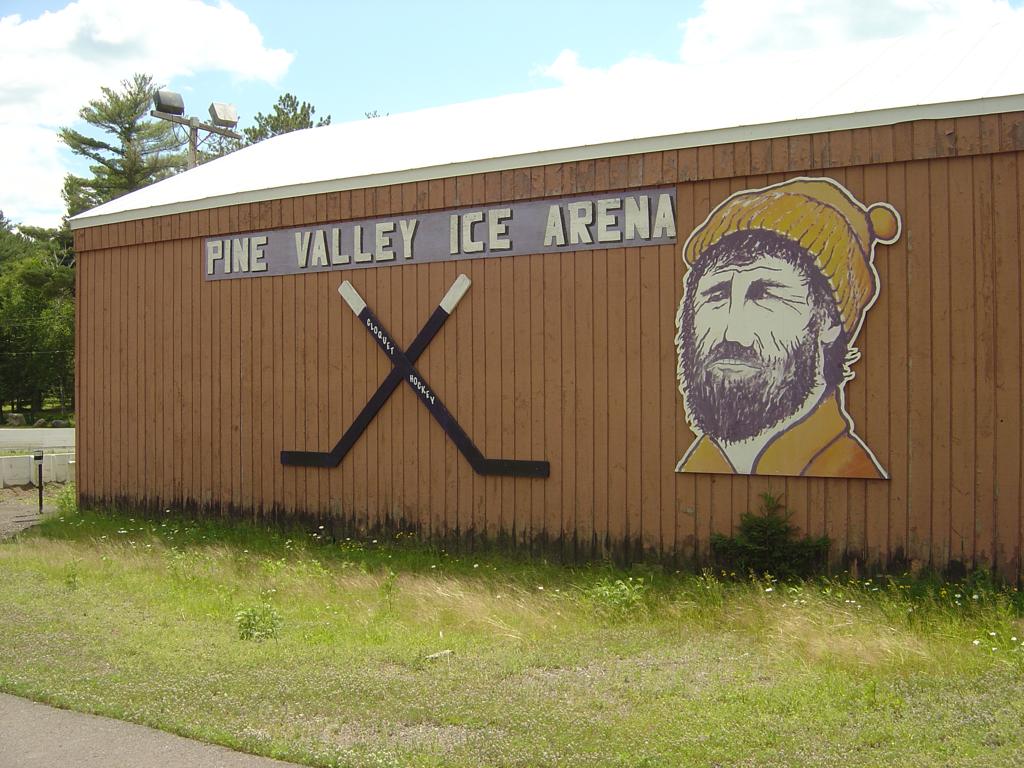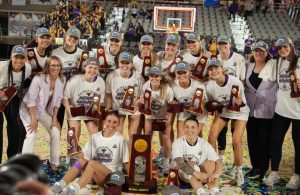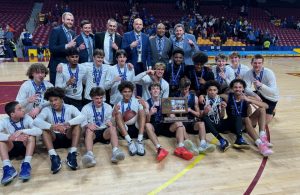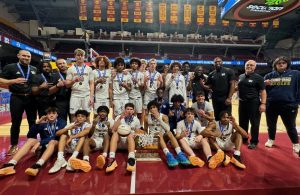-
Final
McGregor
Silver Bay67
32 -
Final
Luverne
Hermantown2
1 -
Final
Wabasha
Floodwood2
0 -
Final
Blackduck
Floodwood2
8 -
Final
Floodwood
NY Mills5
6 -
Final
K-M
Hermantown4
1 -
Final
F. Lake
Gr-Rapids4
3 -
Final
I. Falls
Hermantown3
8 -
Final
I- Falls
Hermantown2
0 -
Final
Carlton
Floodwood0
3 -
Final
Gr-Rapids
N-Branch4
0 -
Final
ElkRiver
Gr-Rapids0
2 -
Final
Cloquet
I. Falls4
7 -
Final 5 inn
Chisholm
Carlton2
12 -
Final
Chisholm
Floodwood2
8 -
Final
Hermantown
Cloquet2
0 -
Final 10-Inn
I- Falls
Proctor1
0 -
Final
Carlton
Marshall1
0
-
3-6-14
Barnum
Esko0
0 -
Final
Hermantown
Cloquet60
71 -
Final
RushCity
Barnum42
78 -
Final
Cloquet
Ashland40
37 -
final
MLWR
Mora71
79 -
Final
SilverBay
Carlton53
70 -
Final
McGregor
T.Harbors32
70 -
Final
H.Town
Denfeld64
53 -
Final
Rush City
E.Central61
46 -
Final
Marshall
Cherry74
68 -
Final
Cloquet
LCA102
80 -
Final
Barnum
Floodwood67
47 -
Final
Cook Co.
MLWR36
64 -
Final
Barnum
Carlton90
27 -
Final
G.Rapids
Hermantown72
74 -
Final
Floodwood
Esko39
80 -
Final
Eveleth-G
Proctor72
93 -
Final
Marshall
S-Ridge77
91 -
Final
D-East
Denfeld52
60 -
Final
Hermantown
Cloquet65
63 -
Final
D-East
G-Rapid58
69 -
Final
Cromwell
Northland56
61 -
1/16/14
Superior
Ashland0
0 -
Final
MLWR
Rush City62
46 -
Final
Wrenshall
Northeast84
47 -
Final
Barnum
E-Central74
33 -
Final
Floodwood
Cromwell77
35 -
Final
G-Rapid
Denfeld61
52 -
Final
Ashland
Proctor80
61 -
Final
Superior
Hermantown44
67 -
Final
McGregor
Onamia41
71 -
Final
Cloquet
MLWR81
60 -
Final
Esko
Foley73
42 -
Final
Virgina
S-Ridge60
55 -
Final
Hibbing
Proctor64
51 -
Final
Hermantown
Thief68
81 -
Final
Crosby
Marshall74
54 -
Final
Wrenshall
MLWR48
85 -
Final/OT
Floodwood
TwoHarbor52
53 -
Final
Esko
Carlton83
24 -
Final
Bemidji
Denfeld68
80 -
Final
S-Ridge
HillCity68
33 -
Final
Barnum
CookC76
31 -
Final
Cromwell
SilverBay69
34 -
Final
Esko
D-East50
38 -
Final
Cromwell
Lakeview64
78 -
Final
B.O.N.G.S
McGregor59
88 -
Final
Superior
Cloquet46
61 -
Final
Barnum
Denfeld69
51 -
Final
Marshall
Proctor72
64 -
Final
Hermantown
MLWR67
62 -
Final
Floodwood
BigFork39
57 -
Final
D-East
Cloquet55
59 -
Final
TwoHarbor
Proctor64
76 -
Final
Marshall
PineCity46
61 -
Final
Zimmerman
Hermantown58
67 -
Final
MLWR
Cromwell77
57 -
Final
Floodwood
Wrenshall68
67 -
Final
Carlton
McGregor64
48 -
Final
SilverBay
Barnum25
85 -
Final
Denfeld
D-East48
67 -
Final
Lakeview
Ashland46
62 -
Final
Lakeview
Washburn75
90 -
Final
Cloquet
Hibbing76
44 -
Final
TwoHarbor
Carlton61
44 -
Final
Barnum
SouthRidge73
35 -
12/30/13
Superior
Ashland0
0 -
12/19/13
Wrenshall
Lakeview0
0 -
12/19/13
Carlton
St.John0
0 -
12/19/13
Virgina
Esko0
0 -
12/19/13
Superior
Marshall0
0 -
12/19/13
Minn-SW
Cloquet0
0 -
12/19/13
Floodwood
Cherry0
0 -
12/19/13
Barnum
PineCity0
0 -
Final
McGregor
Isle39
65 -
Final
SouthRidge
Wrenshall61
66 -
Final
Proctor
MLWR73
78 -
Final
Denfeld
Esko50
75 -
Final
Cloquet
Hermantown47
45 -
Final
Superior
Chippewa71
78 -
Final
Carlton
Lakeview53
80 -
Final
TwoHarbor
SilverBay65
27 -
Final
Marshall
Mesabi38
58 -
Final
Marshall
Deer River69
64 -
Final
FDL
Cromwell113
47 -
Final
Isle
Floodwood68
78 -
Final
LCA
Proctor70
72 -
Final
Floodwood
Northwood52
49 -
Final
Carlton
Wrenshall26
62 -
Final
Esko
Cromwell81
35 -
Final
Barnum
MLWR74
53 -
Final
TwoHarbor
Crosby49
39 -
Final
Fairbaults
Denfeld59
56 -
Final
N-Branch
Hermantown64
67 -
Final
Cloquet
Proctor93
48 -
Final
MN-Trans
FDL62
96 -
Final
Hermantown
St. Paul52
69 -
Final
Aitkin
MLWR41
83 -
Final
Barnum
Esko33
46 -
Final
Floodwood
Carlton82
40 -
Final
SilverBay
T.Harbors25
67 -
Final
Wrenshall
Cook-Cty52
40 -
Final
Cloquet
G.Rapids51
29 -
Final
west
east14
35
-
Final
Floodwood
Cromwell20
28 -
Final
Princeton
Hermtwn21
22 -
Final
Wrenshall
SouthRidge28
8 -
Final
Barnum
Braham8
28 -
Final
Eve/Gilb
MLWR21
44 -
Final
Dmarsh
Esko12
35 -
Final
Proctor
Two Hrbors12
20 -
Final
Rapids
Cloquet24
44 -
11/16/13
Proctor
St.Croix0
0 -
Final
Delano
Cloquet61
33 -
Final
Pierz
Proctor6
19 -
Final
Minneota
MLWR31
20 -
Final
Floodwood
Ely27
41 -
Final
Cloquet
Hermantown23
14 -
Final
Esko
Proctor21
37 -
Final
Mesabi
MLWR6
62 -
Final
Barnum
Braham20
28 -
Final
SouthRidge
Floodwood20
37 -
Final
Denfeld
Hermantown20
29 -
Final
Princeton
Cloquet6
20 -
Final
TwoHarbor
Proctor12
27 -
Final
Marshall
Esko0
14 -
Final
Eveleth-G
MLWR13
58 -
Final
DeerRiver
Barnum2
44 -
Final
McGregor
Floodwood28
47 -
Final
Wrenshall
SouthRidge6
26 -
Final
D-East
Bemidji6
42 -
Final
Denfeld
Hibbing25
0 -
Final
Greenway
Marshall12
34 -
Final
Walker
Barnum8
46 -
Final
SilverBay
Wrenshall0
31 -
Final
Cromwell
Floodwood0
26 -
Final
Cherry
Floodwood0
34 -
Final
HillCity
McGregor18
29 -
Final
I-Fall
TwoHarbor12
20 -
Final
Virginia
Esko20
51 -
Final
McGregor
HillCity38
34 -
Final
TwoHarbor
Deer River21
7 -
Final
SilverBay
SouthRidge6
48 -
Final
Nevis
Cromwell14
0 -
Final\
Wrenshall
Kelliner22
28 -
FInal
LOTW
Floodwood6
42 -
FINAL
RushCity
Esko6
43 -
Final
Northland
Carlton30
18 -
Final
CookC
Barnum16
48 -
Final
Cloquet
PineCity56
3 -
Final
Denfeld
Monticello18
49 -
Final
Marshall
MLWR0
22 -
Final
Hermantown
Virginia57
0 -
Final
Proctor
Hibbing26
16 -
Final
Eveleth-G
Esko28
52 -
Final
Floodwood
Isle13
33 -
Final
Barnum
Ogilive48
12 -
Final
MLWR
TwoHarbor0
0 -
Final
Cromwell
Wrenshall14
17 -
Final
Carlton
McGregor6
50 -
Final
Aiktin
Hermantown12
32 -
Final
Menomine
Superior12
35 -
Final
Cloquet
Proctor17
10 -
Final
D-East
Denfeld12
56 -
Final
DeerRiver
Marshall7
41 -
Final
Isle
Cromwell15
20 -
Final
McGregor
Floodwood8
48 -
Final
Braham
Barnum28
6 -
Final
DeerRiver
MLWR0
45 -
Final
Carlton
Wrenshall0
55 -
Final
Greenway
Hermantown0
44 -
Final
Esko
Proctor20
22 -
Final
Denfeld
BigLake12
34 -
Final
Superior
Hudson18
35 -
Final
TwoHarbor
Marshall0
12 -
Final
Cloquet
Virginia55
0 -
Final
Cromwell
McGregor41
44 -
Final
Greenway
MLWR14
56 -
9/27/13
Wrenshall
Isle0
0 -
Final
Floodwood
Carlton12
34 -
Final
Hermantown
I-Fall39
26 -
Final
Virginia
Proctor0
37 -
Final
Superior
ECN35
31 -
Final
Hibbing
Cloquet6
42 -
Final-OT
Marshall
EastCent20
14 -
Fina
Mesabi E
Barnum8
36 -
Final
Two-Harb
Esko14
28 -
Final
Ely
SouthRidge24
12 -
Final
Cherry
SilverBay12
57 -
Final
Floodwood
Cromwell49
7 -
Final
Barnum
Hinckley62
28 -
Final
TwoHarbor
I-Fall30
28 -
Final
DeerRiver
CookC38
16 -
Final
MLWR
Eveleth55
15 -
Final
McGregor
Wrenshall22
27 -
Final
Carlton
Isle0
41 -
Final
Proctor
Greenway36
20 -
Final
Hermantown
Cloquet21
15 -
Final
RiceLake
Superior20
27 -
FinaL
NorthB
Denfeld26
14 -
Final
Esko
Marshall33
28 -
Final
Hibbing
Hermantown12
41 -
9/13/13
Superior
RiverFall0
0 -
Final
Denfeld
Princeton22
53 -
Final
Proctor
I-Fall17
14 -
Final
Cloquet
Greenway47
20 -
Final
PineCity
MLWR8
43 -
Final
Ogilive
TwoHarbor6
48 -
Final
Isle
McGregor20
24 -
Final
Wrenshall
Floodwood2
18 -
Final
Esko
Deer River54
19 -
Final
E-Central
CookC20
0 -
Final
Cromwell
Carlton29
6 -
Final
Crosby
Barnum12
38 -
Final
Marshall
Eveleth35
15 -
Final
St.Cloud
Marshall5
2 -
Final
Cromwell
LOTW27
6 -
Final
Floodwood
Northland48
6 -
Final
Barnum
EastCentral28
0 -
Final
Eveleth
TwoHarbors25
52 -
Final
Hinckley
C-Country21
8 -
Final
McGregor
Onamia46
16 -
Final
ML/WR
Esko8
6 -
Final
Hill City
Wrenshall30
7 -
Final
Carlton
Nevis0
52 -
Final
Chisago
Denfeld41
18 -
Final
Proctor
Hermantown0
22 -
9-6-13
Eau Clarie
Superior0
0 -
Final
I-Falls
Cloquet12
46 -
9-6-13
Marshall
Ogilive25
14 -
Final
Pine City
Proctor12
28 -
8-30-13 Boys
Superior
Ashland0
0 -
Final
CookCountry
Marshall16
41 -
Final
McGregor
Kelliher16
56 -
Final
Esko
Cloquet18
19 -
Final
Cherry
Chisholm
28 -
Final
E.Central
Hinckley14
7 -
Final
Denfeld
Cambridge0
34 -
Final
Barnum
Rush-City28
7 -
Final
Nevis
Floodwood20
27 -
Final
TwoHarbor
Hibbing28
8 -
Final
Hermantown
MLWR20
24 -
Final
Wrenshall
Onamia33
42 -
Final-OT
LOTW
Carlton22
14 -
Final
Rhinelander
Superior6
57
-
3-6-14
McGregor
Wrenshall0
0 -
3-6-14
CookC
S-Ridge0
0 -
3-6-14
FDL
Cromwell0
0 -
3-6-14
Carlton
Floodwood0
0 -
Final
S.Ridge
Cherry88
68 -
Final
LCA
ELY50
77 -
Final
SilverBay
Carlton44
56 -
Final
H.Town
Denfeld55
45 -
Final
FDL
B-O-N110
34 -
Final
Chisholm
S.Ridge49
45 -
Final
Cloquet
Esko42
40 -
Final
Foley
Cromwell75
53 -
Final
Cook Co.
MLWR38
43 -
Final
MLWR
TwoHarbor52
42 -
Final
Floodwood
Esko34
57 -
Final
Eveleth-G
Proctor63
53 -
Final
Marshall
SilverBay53
22 -
Final
D-East
Denfeld64
47 -
Final
Cromwell
Carlton77
23 -
Final
Floodwood
McGregor41
60 -
Final
Barnum
Carlton79
26 -
Final
TwoHarbor
Wrenshall77
16 -
Final
Mesabi
S-Ridge67
46 -
Final/OT
Lakeview
FDL89
86 -
Final
Esko
Hermantown44
41 -
Final
Cloquet
Denfeld45
54 -
Final
McGregor
Greenway80
21 -
Final
Eveleth-G
MLWR38
47 -
Final
Onamia
Wrenshall42
38 -
Final
M.I.B
Floodwood84
25 -
Final
Cloquet
Superior60
91 -
Final
MLWR
East53
40 -
Final
Proctor
Esko48
51 -
Final
Hermantown
Barnum71
58 -
Final
Cromwell
Floodwood80
42 -
1/13/14
Bayfield
Lakeview0
0 -
Final
Eveleth-G
Hermantown45
69 -
1/10/14
Greenway
Marshall0
0 -
Final
Ely
S-Ridge62
60 -
Final
Cloquet
Proctor52
37 -
Final
Barnum
CookC53
27 -
Final
Cromwell
SilverBay68
19 -
1/09/14
MLWR
Wrenshall0
0 -
Final
M.I.B
S-Ridge74
39 -
Final
Carlton
Esko26
76 -
Final
TwoHarbor
Floodwood49
40 -
1/09/14
Denfeld
Hibbing0
0 -
Final
Hermantown
Ashland59
38 -
Final
Marshall
Cromwell27
71 -
1/4/14
Floodwood
BigFork39
57 -
Final
McGregor
M.I.B42
69 -
Final
Peqout
Esko67
72 -
1/4/14
TwoHarbor
Proctor0
76 -
Final
Marshall
PineCity40
36 -
Final
Bemidji
Cloquet35
59 -
Final
Isle
TwoHarbor64
36 -
1/3/14
SilverBay
Barnum0
0 -
Final
Superior
Hudson78
43 -
1/3/14
Mesabi
Proctor0
0 -
Final
Denfeld
D-East48
76 -
Final
Wrenshall
Floodwood12
57 -
Final
McGregor
Carlton76
33 -
Final
Eveleth
Cloquet46
67 -
Final
Lakeview
Washburn37
65 -
Final
Cromwell
MLWR39
33 -
Final
Esko
Eveleth50
26 -
12/19/13
Proctor
Hibbing0
0 -
12/19/13
HillCity
Cromwell0
0 -
12/19/13
Floodwood
MLWR0
0 -
12/19/13
Denfeld
Hermantown0
0 -
12/19/13
Cherry
Wrenshall0
0 -
12/19/13
Esko
SilverBay0
0 -
Final
Hermantown
Cloquet46
49 -
Final
E-Central
Barnum45
54 -
Final
Marshall
Proctor26
62 -
12/17/13
D-East
G-Rapid49
55 -
Final
Carlton
TwoHarbor30
64 -
12/16/13
Lakeview
Wrenshall0
0 -
Final
McGregor
SouthRidge78
54 -
Final
T.Harbors
Denfeld28
56 -
Final
Wrenshall
Hinckely41
55 -
Final OT
TwoHarbor
CookC43
40 -
Final OT
Cloquet
Crosby51
49 -
Final
DeerRiver
Marshall43
25 -
Final
Wrenshall
Carlton41
47 -
Final
Gr.Rapids
Hermantown60
49 -
Final
MN-Trans
FDL30
69 -
Final
SilverBay
T.Harbors12
55 -
Final
Wrenshall
Cook-Ct41
53 -
Final
FDL
LCA75
36 -
Final
Cloquet
Ashland50
47 -
final
e
r2
0
-
Final
LDC
P/H1
4 -
Final
STPU
P/H5
2 -
Final
Duluth
Superior8
0 -
Final
Hibbing
P/H0
4 -
Final
C.E.C
G-Rapid0
3 -
Final
MLWR
Superior7
2 -
Final
Duluth
Eden1
6 -
Final
Proctor
GrandRapid2
6 -
Final
C.E.C
Hibbing1
5 -
Final
ElkRiver
Duluth8
0 -
Final
C.E.C
Benilde0
9 -
Final
ForestL
Duluth2
5 -
Final
SilverBay
P/H0
6 -
Final
MLWR
SilverBay4
2 -
Final
Siren
Superior5
4 -
1/4/14
MLA
Webster0
0 -
Final
Duluth
C.E.C5
0 -
Final
P/H
Hayward5
1 -
1-2-14
Superior
New Rich0
0 -
12/19/13
Hayward
Superior0
0 -
12/19/13
Eveleth-G
C-E-C0
0 -
12/19/13
Duluth Area
Proctor0
0 -
Final
P/H
Superior7
3 -
12/17/13
H/C
MLA3
3 -
12/17/13
Duluth
G-Rapid3
4 -
Final
P-H
Blake5
7 -
Final
Irondale
Duluth10
1 -
Final
Hudson
Superior6
4 -
Final
C-E-C
ElkRiver3
6 -
Final
P-H
C-E-C3
6 -
Final
Roseville
C-E-C5
2
-
Final
C-E-C
Duluth E.2
1 -
Final
MLWR
Proctor2
8 -
Final/OT
Denfeld
C.E.C1
1 -
Final/OT
D-East
Apple0
0 -
Final
Legacy
MLWR7
0 -
Final
G-Rapid
C.E.C5
4 -
Final
Hermantown
Superior8
2 -
Final
Denfeld
Hibbing4
2 -
Final
MLWR
Highland6
1 -
Final
STPAS
Marshall1
5 -
Final
Denfeld
D-East0
3 -
Final
St.CloudC
Hermantown0
6 -
Final
C.E.C
Eden2
4 -
Final
Proctor
Hayward4
3 -
Final
N-Lake
MLWR6
3 -
Final
Marshall
Superior4
2 -
Final
Proctor
Denfeld0
7 -
Final
Greenway
Denfeld0
9 -
Final
Hermantown
I-Fall10
0 -
Final
Marshall
Totino3
2 -
Final
C.E.C
St.Francis6
5 -
Final
EauClaire
Superior6
4 -
Final
Mora
MLA3
0 -
Final
Proctor
Superior2
5 -
1/3/14
Spooner
Ashland0
0 -
Final
Hermantown
Marshall6
2 -
Final
C-E-C
G.Rapids1
5 -
Final
Ely
Mooselake4
6 -
Final
Eagan
Hermantown4
1 -
Final
Rosemount
C.E.C3
2 -
Final
N.Shore
Mooselae13
1 -
Final
SST.PAUL
Hermantown0
11 -
Final
Bemidji
C.E.C0
3 -
0
0 -
Final
Redwing
Hermantown4`
12 -
Final
St.Louis
C.E.C2
10 -
12/19/13
Superior
Denfeld0
0 -
12/19/13
C-E-C
Virginia0
0 -
12/19/13
MLA
Becker0
0 -
Final
Marshall
Proctor10
0 -
Final/OT
Denfeld
Hermantown2
3 -
Final
Thief
Hermantown2
7 -
Final
G-Rapid
Marshall4
6 -
Final
So.St.Paul
C-E-C1
3 -
Final
Hermantown
Orono3
2 -
Final
Marshall
Blake6
2 -
Final
L.Woods
Proctor1
5 -
Final
So.St.Paul
Denfeld3
2 -
Final
Hermantown
Hopkins5
1 -
Final
Stillwater
C-E-C5
0 -
Final
Stillwater
C-E-C5
0
-
Final
Hermantown
Waconia0
5 -
Final
Denfeld
Bendile0
1 -
Final
Hermantown
Chisago3
1 -
Final
Denfeld
Hermantown1
0 -
Final
Hermantown
Monticello2
1 -
Final
Princeton
Denfeld0
1 -
Final
Proctor
Hermantown0
3 -
Final
Hermantown
Cloquet4
3 -
Final
G-Rapid
Marshall4
3 -
Final
Denfeld
Chisago0
3 -
Final
Marshall
Denfeld1
5 -
Final
Cloquet
Proctor1
2 -
Final
Esko
Hermantown0
1 -
Final
Esko
Zimmerman6
3 -
Final
Proctor
Denfeld1
2 -
Final
TwoHarbor
Cloquet0
4 -
Final
TwoHarbor
Cloquet0
4 -
Final
G-Rapid
Proctor0
1 -
Final
NorthB
Marshall1
6 -
Final
Hibbing
Marshall3
4 -
Final
Hibbing
TwoHarbor1
3 -
Final/OT
Hermantown
Denfeld0
0 -
Final/OT
Denfeld
Proctor2
2 -
Final
Proctor
Marshall6
0 -
Final
Spooner
Superior0
9 -
Final/
Denfeld
Cloquet1
1 -
Final
Visist
Marshall7
3 -
10/5/13
TwoHarbor
Princeton0
0 -
Final/OT
Marshall
Hermantown4
3 -
Final
Hermantown
Marshall3
2 -
Final
Denfeld
G-Rapid4
1 -
Final
Cloquet
Proctor5
0 -
Final
Ashland
Superior11
0 -
Final
Proctor
TwoHarbor0
1 -
Final
Esko
Cloquet0
3 -
Final
D-East
Hermantown0
0 -
10/2/13Final
D-East
Hermantown4
1 -
Final/OT
TwoHarbor
GrandRapid1
1 -
Final
Denfeld
Esko2
1 -
Final
Superior
Denfeld1
3 -
10/1/13
Eveleth-G
Marshall0
0 -
10/1/13
Ashland
TwoHarbor0
0 -
Final
Denfeld
Esko2
1 -
Final/OT
TwoHarbor
GrandRapid1
1 -
9/30/13
Ashland
TwoHarbor0
0 -
Final
Cloquet
East2
3 -
Final/OT
Hermantown
Proctor2
2 -
Final
Hermantown
Proctor2
1 -
Final/OT
Princeton
Esko1
1 -
Final
TwoHarbor
Chisago0
5 -
Final
NorthB
Denfeld0
10 -
Final
Proctor
Cloquet0
3 -
Final
Marshall
Hibbing4
2 -
Final
Hermantown
Denfeld3
0 -
Final
TwoHarbor
Hibbing1
4 -
Final
Denfeld
D-East0
11 -
Final
Marshall
Cloquet0
1 -
Final
Proctor
GrandRapid2
4 -
Final
Esko
Hermantown1
3 -
Final
Eveleth-G
Esko0
6 -
Final
TwoHarbor
Denfeld0
4 -
Final
Cloquet
GrandRapid2
1 -
Final
GrandRapid
Cloquet1
5 -
Final
Hibbing
Proctor2
6 -
Final
Proctor
Hibbing5
2 -
Final
Denfeld
Ashland1
6 -
9/24/13
Washburn
Superior0
0 -
Final
Ashland
Hermantown4
0 -
Final
Hibbing
Superior3
2 -
Final
Esko
D-East0
3 -
Final/OT
Eveleth-G
TwoHarbor1
1 -
9/21/13
Princeton
TwoHarbor0
0 -
Final
Denfeld
Marshall3
0 -
Final
Cloquet
Hermantown0
1 -
Final
Chisago
Denfeld5
1 -
Final
New Richmond
Superior0
0 -
Final
Marshall
Esko0
2 -
Final
Duluth E
Denfeld0
2 -
Final
Duluth E
Denfeld4
0 -
9/19/13
TwoHarbor
Hermantown0
0 -
Final-Boy
Superior
Marshall1
12 -
Final
Marshall
Esko0
2 -
Final
Proctor
DuluthE0
4 -
Final/0T-girls
Denfeld
Hermantown1
1 -
Final
Denfeld
Hermantown0
2 -
Final
Cloquet
Hibbing0
2 -
Final/OT
Hibbing
Cloquet3
3 -
Final-Boys
Marshall
Ashland1
2 -
Final
Cherry
Floodwood0
3 -
Final-Girl
Esko
TwoHarbor2
1 -
Final-Girl
G-Rapid
Proctor0
5 -
Chisago
Esko2
1 -
Final
Benilde
Cloquet7
0 -
Final-BS
Denfeld
N-Branch2
5 -
Final
Superior
TwoHarbor3
2 -
Final
Esko
Hermantown1
4 -
Final
Denfeld
Hibbing5
2 -
Final
TwoHarbor
Cloquet0
4 -
Final
Marshall
Proctor3
1 -
Final
Cloquet
Ashland0
4 -
Final
Proctor
Marshall1
3 -
Final
Marshall
Cloquet3
6 -
Final
Eveleth
Proctor0
4 -
Final
Proctor
Eveleth3
0 -
Final
GrandRapid
Hermantown0
6 -
9/10/13
Superior
Ashland0
0 -
Final
DuluthEast
Marshall1
0 -
Final
Cloquet
TwoHarbor7
0 -
9/9/13
Esko
GrandRapid3
2 -
Final
TwoHarbor
Marshall0
3 -
Final
Denfeld
Hibbing2
4 -
Final
Princeton
Cloquet2
3 -
Final
Proctor
Sartell0
2 -
Final
EastGrand
Denfeld1
2 -
Final
Hibbing
Hermantown0
5 -
Final
TwoHabors
Becker4
0 -
Final
TwoHarbor
N-Branch2
3 -
Final
EastGrand
Esko5
1 -
Final
EastGrand
TwoHarbors8
1 -
Final-Boys
Proctor
Superior1
0 -
Final-Boys
Hermantown
Cloquet1
4 -
Final-Girls
Denfeld
Proctor3
1 -
Final-Girls
Hermantown
Cloquet3
1 -
Final-Boys
TwoHarbors
Eveleth4
0 -
Final-Girls
TwoHarbors
Eveleth2
1 -
Final
Hermantown
Superior2
-
Final/OT
Cloquet
Marshall3
4 -
Final-Boys
TwoHarbor
Proctor1
8 -
Final
Hibbing
Esko3
6 -
Final-Girls
Hermantown
TwoHarbor7
0 -
Final
AOHA
Cloquet4
1 -
Final
AOHA
Marshall0
1 -
Final
Denfeld
Cloquet0
5 -
Final
AOHA
TwoHarbors10
0 -
8/29/13-Boys
Eveleth-G
Cloquet0
0 -
Final-Boys
Osceola
Superior3
4 -
Final-Boys
Proctor
Hermantown1
3 -
Final-Girls
Proctor
Hermantown0
2 -
Final-OT
Princeton
Esko0
0 -
Final B 8-28
Marshall
Denfeld1
0 -
Final G 8-28
Marshall
Denfeld0
3 -
Final-G 8/28
GrandRapid
TwoHarbors3
4 -
Final-Boys
Marshall
Hermantown0
3 -
Final-Boys
Ashland
Proctor3
0 -
Final-Boys
F. Lake
Denfeld3
1 -
Final-Girls
Marshall
Hermantown2
9 -
Final-Girls
Esko
Cloquet2
1 -
Final-Boys
Superior
Cloquet0
5 -
PPD
Hasting
Denfeld0
0 -
Final-Girl
TwoHarbor
Hibbing0
3 -
Final-Girls
Chisago
Hermantown1
4 -
Final-Girls
Andover
East4
5 -
Final-Boys
Providence
Hermantown1
1 -
Final-Boys
Rosemount
Cloquet2
0 -
Final-Girls
Posemount
Cloquet9
1 -
Final-Girls
F. Lake
Proctor2
0 -
Final-Boys
Denfeld
Cambridge4
2 -
Final-Boys
Marshall
B-S-M0
4 -
Final -Girls
Esko
Proctor0
1 -
Final-Girls
Denfeld
Forest Lk2
4 -
Boys Final
Superior
Spooner3
1 -
test
tmp
tmp21
1
-
Final
MLWR
Mora
3 -
Final
Esko
Cloquet1
3 -
Final
CookCounty
SouthRidge
3 -
Final
Hermantown
Virginia3
1 -
Final
Cromwell
Carlton
3 -
Final
Carlton
MCW2
3 -
Final
Carlton
Minneota0
3 -
Final
Mora
Cloquet3
1 -
Final
Carlton
McGregor3
0 -
Final
Cloquet
Hermantown3
0 -
Final
Chisholm
Carlton2
3 -
Final
D-East
Northland2
3 -
Final
I-Fall
Hermantown0
3 -
Final
Esko
Cloquet0
3 -
Final
McGregor
SouthRidge3
2 -
Final
CookC
Carlton0
3 -
Final
D-East
Chisago3
2 -
Final
TwoHarbor
Hermantown0
3 -
Final
Crosby
Cloquet0
3 -
Final
Marshall
Esko
3 -
Final
MLWR
Aiktin1
3 -
Final
Proctor
Hibbing0
3 -
Final
Floodwood
SouthRidge0
3 -
Final
Barnum
McGregor0
3 -
Final
Northland
Carlton0
3 -
Final
CookC
Cromwell3
1 -
Final
Northland
Wrenshall3
2 -
Final
Lakeview
Barnum0
3 -
Final
SilverBay
Floodwood0
3 -
Final
Cloquet
Hermantown2
3 -
Final
Northeast
Marshall3
0 -
Final
Denfeld
Superior0
3 -
Final
SouthRidge
Proctor3
0 -
Final
Barnum
Esko0
3 -
Final
Carlton
Cromwell3
0 -
Final
Wrenshall
MLWR0
3 -
Final
TwoHarbor
SilverBay2
3 -
Final
CookC
McGregor0
3 -
Final
Wrenshall
SouthRidge0
3 -
Final
Lakeview
Marshall1
3 -
Final
Denfeld
Proctor3
0 -
Final
D-East
Esko3
0 -
Final
Cromwell
McGregor0
3 -
Final
TwoHarbor
Barnum1
3 -
Final
Floodwood
Wrenshall3
1 -
Final
MLWR
Carlton0
3 -
Final
Marshall
Proctor2
3 -
Final
Superior
Ashland0
3 -
Final
MLWR
Cromwell1
3 -
Final
Esko
Wrenshall3
0 -
Final
Carlton
Floodwood3
0 -
Final
McGregor
SilverBay3
0 -
Final
Barnum
CookC0
3 -
Final
Denfeld
D-East2
3 -
Final
Proctor
Cloquet0
3 -
Final
Hermantown
Virginia3
0 -
Final
Hibbing
Denfeld3
1 -
Final
Superior
Cloquet0
3 -
Final
SilverBay
Marshall0
3 -
Final
CookC
LCA3
0 -
Final
MLWR
Floodwood3
1 -
Final
TwoHarbor
Wrenshall1
3 -
Final
Carlton
Esko2
3 -
Final
RiceLake
Superior0
3 -
Final
Greenway
Denfeld3
0 -
Final
Hermantown
Proctor3
0 -
Final
Floodwood
Cromwell3
0 -
Final
Esko
MLWR3
2 -
Final
Carlton
TwoHarbor3
0 -
Final
SilverBay
Barnum2
3 -
10/1/13
CookC
Wrenshall0
0 -
Final
Crosby
Cloquet
3 -
Final
Superior
D-East2
3 -
Final
Marshall
Ely2
3 -
9/30/13
E-Central
Barnum0
0 -
Final
Floodwood
Northland3
0 -
Final
HillCity
McGregor1
3 -
Final
Carlton
Hermantown2
3 -
Final
Wrenshall
Marshall2
3 -
Final
Proctor
TwoHarbor2
3 -
Final
SouthRidge
Marshall3
0 -
Final
Floodwood
Esko2
3 -
Final
Cromwell
Barnum3
0 -
Final
MLWR
TwoHarbor3
1 -
Final
Wrenshall
McGregor3
0 -
Final
CookC
Carlton0
3 -
Final
Proctor
Superior0
3 -
Final
Denfeld
Cloquet0
3 -
Final
Ashland
Hermantown1
3 -
Final
Cromwell
Esko0
3 -
Final
TwoHarbor
Floodwood0
3 -
Final
McGregor
Carlton0
3 -
Final
SilverBay
Wrenshall0
3 -
Final
CookC
MLWR0
3 -
Final
Hermantown
Hibbing3
2 -
Final
GrandRapid
Denfeld3
0 -
Final
Cloquet
Marshall3
0 -
9/24/13
Proctor
Eveleth0
0 -
Final
MLWR
E-Central3
1 -
Final
Esko
Cloquet1
3 -
Final
Floodwood
SouthRidge1
3 -
Final
Isle
McGregor0
3 -
Final
Esko
TwoHarbor3
-
Final
Lakeview
Cromwell
3 -
Final
McGregor
MLWR2
3 -
Final
Wrenshall
Barnum0
3 -
Final
CookC
Floodwood3
0 -
9/19/13
Carlton
SilverBay0
0 -
Final
Proctor
Ashland0
3 -
Final
Cloquet
Hibbing0
3 -
Final
Hermantown
Denfeld0
3 -
Final
Marshall
I-Fall0
3 -
Final
TwoHarbor
Cromwell0
3 -
Final
Floodwood
McGregor0
3 -
Final
Barnum
Carlton0
3 -
Final
Esko
CookC3
1 -
Final
MLWR
SilverBay3
0 -
Final
Hibbing
Superior3
1 -
Final
Cloquet
Virginia3
1 -
Final
Duluth E
Proctor3
0 -
Final
Denfeld
Marshall1
3 -
Final
McGregor
Northland3
0 -
Final
Mesabi
CookC3
0 -
Final
D-East
Hermantown1
3 -
Final
Hibbing
Hermantown1
3 -
Final
Proctor
Marshall2
3 -
Final
Superior
Denfeld3
0 -
Final
McGregor
Esko1
3 -
Final
Barnum
MLWR0
3 -
Final
Wrenshall
Cromwell0
3 -
Final
SouthRidge
Carlton2
3 -
Final
SilverBay
Floodwood0
3 -
Final
CookCountry
TwoHarbor3
0 -
Final
Superior
Marshall0
3 -
Final
Greenway
Hermantown3
0 -
Final
Virgina
Proctor3
0 -
Final
Virgina
Esko1
3 -
Final
SouthRidge
Cromwell3
0 -
Final
Floodwood
HillCity1
3 -
Final
Cloquet
MLWR3
0 -
9/10/13
Wrenshall
LCA3
1 -
Final
Northeast
Carlton0
3 -
Final
SouthRidge
SilverBay3
0 -
9-7-13
Proctor
Marshall0
0 -
Final
Hermantown
G.Rapids0
3 -
Final
Cloquet
Eveleth3
0 -
Final
Denfeld
Ashland0
3 -
Final
McGregor
TwoHarbors0
3 -
Final
Floodwood
Barnum2
3 -
Final
Proctor
MLWR2
3 -
Final
Wrenshall
Carlton0
3 -
Final
SilverBay
Esko0
3 -
Final
Cromwell
CookCountry3
2 -
Final
Onamia
Barnum3
0 -
Final
Lakeview
Wrenshall0
3 -
Final
CookCountry
SilverBay3
0 -
Final
DuluthEast
Hermantown1
3 -
Final
GrandRapid
Cloquet3
0 -
Final
NBranch
Denfeld3
1 -
Final
Ashland
Marshall3
0 -
Final
Denfeld
Virgina3
2 -
Final
Barnum
PineCity3
1 -
Final
Marshall
CookC1
3 -
Final -Girls
RushCity
Barnum3
2 -
Final
East Cent
Proctor1
3 -
Final
Wrenshall
MIB0
3 -
Final
MLWR
Hinckley3
0 -
Final
Hermantown
Esko2
3 -
Final
DeerRiver
Carlton0
3 -
Final
Southridge
Northwoods2
3 -
Final
East
Cloquet0
3 -
Final
NE Range
Cromwell0
3 -
Final
I- Falls
TwoHarbors3
0 -
Final
McGregor
Southridge0
3 -
Final
N-K
Floodwood0
3 -
Fianl
TwoHarbors
Virginia0
3 -
test
tmp
tmp21
1
Don't Miss
- Wilderness Open Alaska Trip with Win
- Hunters Squeak By Lumberjacks In OT
- Chiles Leads Polar Bears Past Bulldogs
- Duluth Skates By Hibbing/Chisholm
- Esko Handles Crosby-Ironton
- C-E-C Wrestlers take Down Mille Lacs
- Bemidji Shoots Down Lady Jacks
- Carlton Handles Wrenshall To Capture Jug
- Denfeld Snaps 28 Game Skid Against Duluth East
- Bombers Fly By Cook County
The Barn, Hockey a Look Back
- Updated: December 22, 2014



 Back when I laced up the Tacks, for the mighty Cloquet Jacks and Bill Kennedy in the early 1970’s, you either played with fearless toughness and unmatched passion or you found yourself sitting on the bench. Or worse, playing shinny hockey full-time after school and on weekends at a Wood City frozen pond.
Back when I laced up the Tacks, for the mighty Cloquet Jacks and Bill Kennedy in the early 1970’s, you either played with fearless toughness and unmatched passion or you found yourself sitting on the bench. Or worse, playing shinny hockey full-time after school and on weekends at a Wood City frozen pond.


You must be logged in to post a comment Login